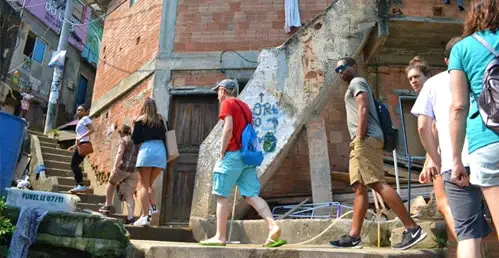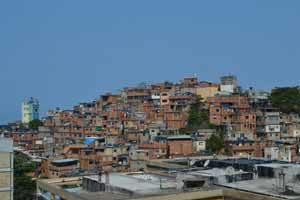Blog
Las favelas de Río de Janeiro
- 03 de July de 2018
- Publicado por: Guest
- Categoría: Mais Caminhos and the communities in Rio de Janeiro

Si escribes la palabra «favela» en Google, serás bombardeado con términos como «precario», «barrio marginal», «un área urbana informal de bajos ingresos en Brasil», etc. Por lo tanto, no sorprende que las favelas sean más a menudo asociadas con la pobreza, el crimen y la violencia. No obstante, en este artículo, espero mostrar que hay mucho más en las favelas de Río de Janeiro de lo que parece.
De hecho, la mera existencia de favelas en Brasil es en gran medida un legado de la trata transatlántica de esclavos. Durante este período, Brasil transportó más africanos a través del Océano Atlántico que cualquier otro país del mundo; 4,9 millones de personas esclavizadas de África fueron traídas a Brasil durante el período de 1501 a 1866.
Cuando finalmente se abolió la esclavitud en 1888, aunque libres, estos ex esclavos continuaron teniendo derechos civiles desiguales. Estos derechos desiguales habrían contribuido a su inestabilidad económica, llevándolos así a construir sus propias comunidades: las favelas. Las favelas se caracterizaron por su desregulación; fueron construidas sin ningún tipo de autoridad, sin permisos de construcción, sin trámites burocráticos: las favelas estaban completamente fuera del control del gobierno brasileño. Pero, aquí hay algo para reflexionar… ¿Quizás esta completa falta de autoridad gubernamental fue y es la fuerza principal detrás de la cultura de creatividad e ingenio de las favelas brasileñas, así como la anarquía y la disfunción?
Por lo tanto, las favelas de Río de Janeiro no solo representan áreas de la ciudad que carecen de los servicios básicos del Estado y están habitadas por personas que no solo carecen de dinero sino que trabajan muy duro y tienen muchas luchas en sus vidas. Las favelas de Río de Janeiro también representan áreas de la ciudad que, a pesar de estas carencias, son un eje indudable para su propia cultura y comercio.
Por ejemplo, en Rocinha, una de las favelas más grandes de Río de Janeiro (se la podría considerar una ciudad dentro de la ciudad). Hay bancos, restaurantes, salones de belleza, tiendas de mascotas, todo lo que pueda necesitar. Lo que la gente ha creado solo en Rocinha es increíble, y este ingenio espontáneo no es raro en las favelas de Río de Janeiro.
Asimismo, en Vidigal, otra de las favelas de Río de Janeiro que ha sido asociada con el crimen organizado, específicamente la pandilla ADA (Amigos dos Amigos), es un ejemplo más de la “creatividad y el ingenio” entre la “anarquía y la disfunción” de vida de favela.
El parque ecológico Sitiê fue creado a partir de lo que fue un basurero de 25 años, que asfixió con basura el cerro Vidigal. No se ofreció ayuda del gobierno para el proyecto, ni siquiera se solicitó permiso de construcción; en las favelas, esto no es necesario.
Se necesitaron ocho años de esfuerzos comunitarios para limpiar Sitiê y convertirlo en lo que es hoy; un recordatorio inspirador del ingenio que se cierne dentro de las favelas de Río de Janeiro.
Hoy en día, las favelas no solo están habitadas por descendientes de esclavizados africanos, sino también por inmigrantes brasileños de las zonas rurales del país, que a menudo buscan trabajo en la ciudad. Sin embargo, Río de Janeiro es una de las ciudades más caras de América Latina, y teniendo en cuenta que el salario mínimo en Brasil es de 979 reales mensuales, muchas personas no tienen otra opción que instalarse en las favelas.
En conclusión, es importante recordar que los ocupantes de estas comunidades son como cualquier otra persona; simplemente están intentando salir adelante en un mundo cada vez más caótico, con esperanzas y sueños.
por Nick McLennan


 English
English Deutsch
Deutsch Français
Français Português
Português

